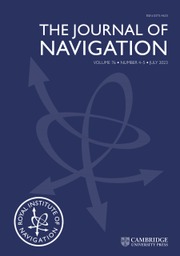No CrossRef data available.
Article contents
Path planning for search and rescue of unmanned surface vehicles based on combined convolutional neural network rapid-exploration random tree and improved artificial potential field
Published online by Cambridge University Press: 07 November 2025
Abstract
The unmanned surface vehicle (USV) is deemed with significant potential to deal with the maritime search and rescue (SAR) missions. This paper investigates the path planning of the USV with SAR tasks, and proposes a novel algorithm based on combined convolutional neural network rapid-exploration random tree and improved artificial potential field (CRRT-IAPF). The proposed scheme can be divided into the global and the local path plannings. The rapid-exploration random tree (RRT) method is employed to generate the global path in the sea chart, which is further discriminated to be optimal or non-optimal through a well-trained convolutional neural network (CNN). The artificial potential field (APF) method is adopted to plan the local path in the environment with small obstacles and SAR task points. To facilitate the path convergence and avoid the oscillation, the potential field function is improved in a more efficient way. In addition, the evaluation functions of search success rate and rescue success rate are established to evaluate the completeness of SAR tasks. Through the simulation, it is verified that the proposed CRRT-IAPF scheme has the superiority over the others.
Keywords
Information
- Type
- Research Article
- Information
- Copyright
- © The Author(s), 2025. Published by Cambridge University Press on behalf of The Royal Institute of Navigation


